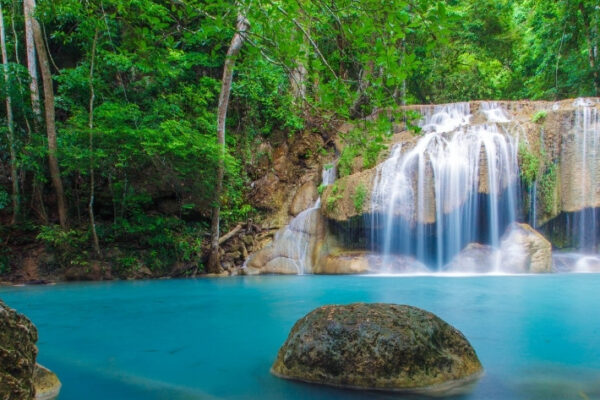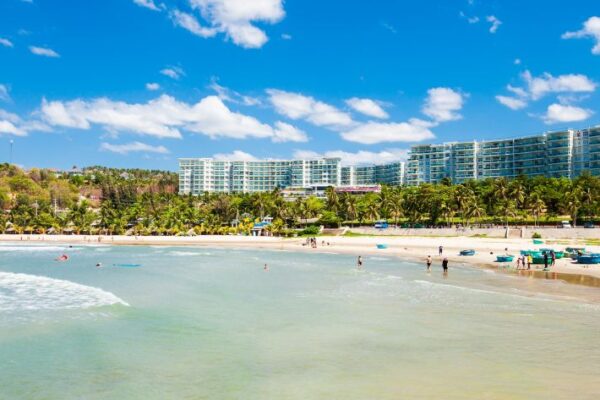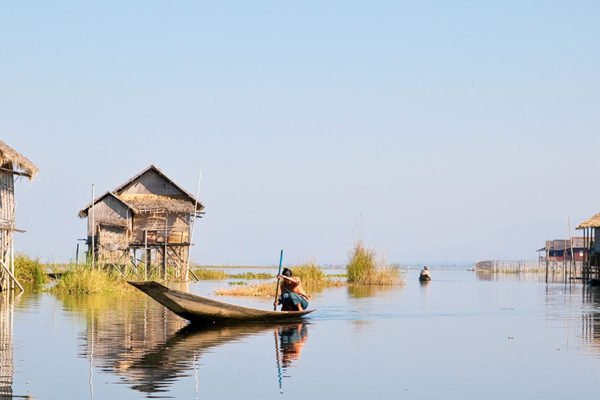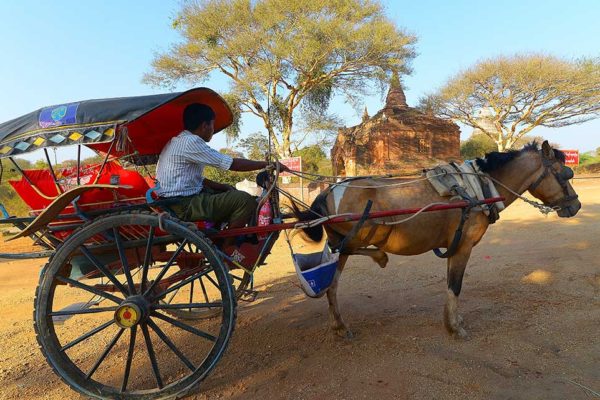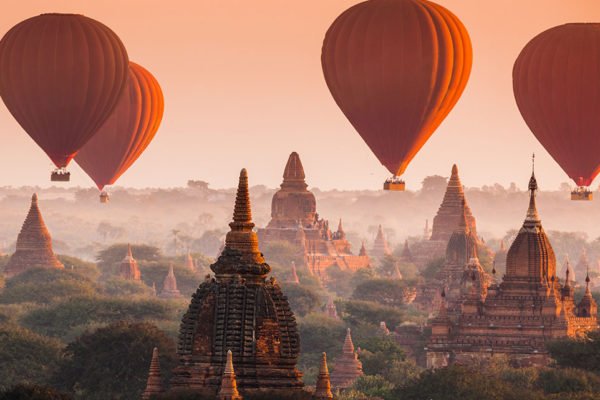Essential Myanmar Travel Tips For First Timers
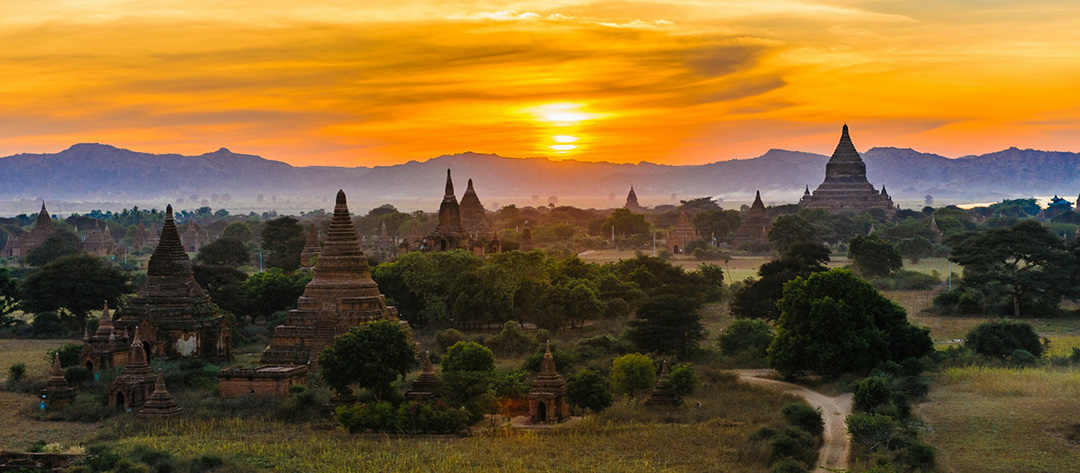
For years, Myanmar (formerly Burma) has been celebrated by travelers for its gilded stupas and serene leg-rowing fishermen on Inle Lake. It represents one of travel’s last authentic frontiers, where the journey is as significant as the destination. However, exploring this unique country requires careful preparation and understanding.
This guide provides fundamental Myanmar travel tips, based on real-life experiences. Our aim is to provide practical advice to help you navigate the Golden Land like a seasoned traveler. From managing currency quirks to mastering temple etiquette, these tips will ensure your journey to Myanmar is smooth, respectful, and magical.
Before You Even Pack: The Pre-Trip Checklist
The foundation of a stress-free trip to Myanmar is laid long before you step on the plane. Getting your logistics in order is crucial, as winging it can be challenging and lead to unnecessary complications.
Visas and Paperwork: Your Golden Ticket
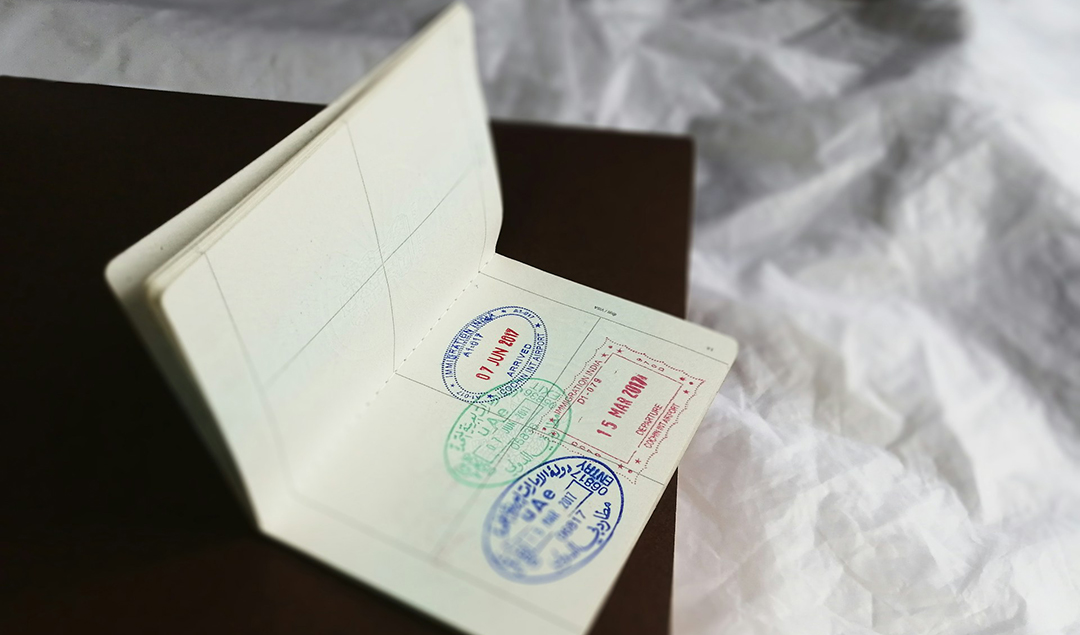
For most nationalities, securing a visa for Myanmar is a straightforward online process. The official government e-visa portal is the only authorized platform for applying to avoid third-party scams. The process typically involves filling out a form, uploading a recent passport-style photo, and paying a fee, usually around $50 USD for a 28-day tourist visa.
Crucial Tip: Once your e-visa is approved (usually within 1-3 business days), you will receive an approval letter via email. You must print this letter out. You will need to present the physical copy to immigration upon arrival. Do not rely on having it on your phone. It is also important to note that this approval letter is typically valid for entry within 90 days of issuance, so plan your application accordingly. As a backup, print two copies and keep them in separate bags, and save a digital copy to your email or cloud storage. This single piece of paper is your key to entering the country.
The Best Time to Visit: Choosing Your Season
Myanmar’s climate is dominated by distinct seasons, each offering a vastly different experience.
- The Cool/Dry Season (October to February): This is the peak tourist season for a reason. The weather is glorious, with pleasant temperatures (20-30°C), minimal rainfall, and clear blue skies, making it perfect for photography. It’s the ideal time for hot air ballooning in Bagan, comfortable trekking in the Shan hills, and leisurely boat trips on Inle Lake. The downside? More crowds at major sites and higher prices for accommodation and flights. Booking well in advance is highly recommended.
- The Green Season (June to September): Often called the “rainy season,” this period shouldn’t be dismissed. The rains typically come in short, intense afternoon bursts, not all-day downpours. The landscape is transformed into a breathtakingly lush, vibrant green. You’ll find fewer tourists, and prices are significantly lower. It’s a fantastic time for photographers who love dramatic skies and verdant scenery, and the temples of Bagan feel especially serene without the crowds.
- The Hot Season (March to May): This period sees scorching temperatures, often exceeding 40°C, especially in the central plains of Bagan and Mandalay. While challenging, it’s also when the country’s biggest festival, Thingyan (the Water Festival), takes place in mid-April. It’s a joyous, nationwide water fight celebrating the Buddhist New Year, but be prepared for widespread travel disruptions as most businesses close.
Travel Insurance is Non-Negotiable
Do not travel to Myanmar without comprehensive travel insurance. Medical facilities, particularly outside of Yangon and Mandalay, are fundamental. In the event of a serious illness or injury, you would require medical evacuation to a neighboring country, such as Thailand or Singapore, which can be astronomically expensive. Imagine renting an e-bike to explore the temples of Bagan—a fantastic experience, but a minor accident could result in an injury that local clinics are unequipped to handle.
Your insurance should cover medical emergencies, emergency evacuation, trip cancellation, and theft. It’s a small price to pay for immense peace of mind.
Money Matters: Handling Kyat Like a Pro
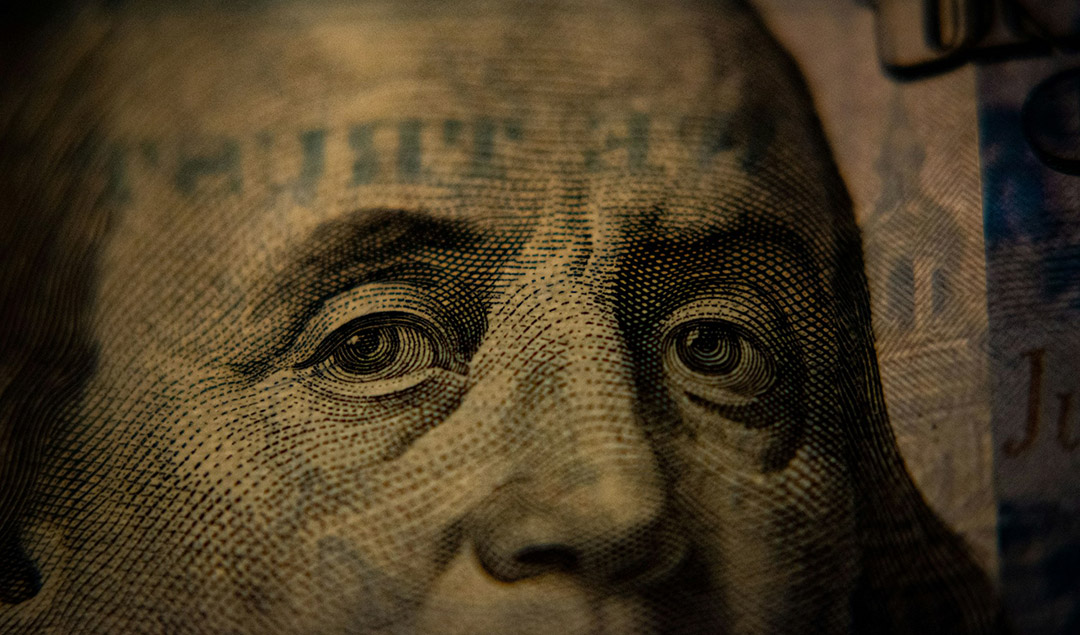
Navigating the financial landscape in Myanmar has its own unique set of rules. Forgetting them can lead to frustrating situations, while remembering them will make you feel like a local expert.
The “Pristine” US Dollar Rule: A Peculiar Quirk
When exchanging money, official money changers and banks will only accept US dollars that are in perfect, pristine condition. This rule is a legacy of years of economic isolation, during which counterfeit notes were a concern and crisp dollars were viewed as a more reliable store of value. This means:
- No folds or creases. Keep them flat in an envelope.
- No tears, rips, or nicks, no matter how small.
- No stamps, ink marks, or any kind of writing.
- They should be recent series notes (preferably 2009 or later with the large heads).
Before you leave home, visit your bank and specifically request crisp, new US dollar bills, especially $100 and $50 notes, as they often yield a slightly better exchange rate. Inspect every bill you are given. A single pen mark can render a bill useless for exchange in Myanmar.
ATMs and Cash: A Balancing Act
The good news is that ATMs are now widely available in all major cities and tourist hubs, such as Yangon, Mandalay, Bagan, and Inle Lake. They dispense the local currency, the Myanmar Kyat (pronounced ‘chat’). However, once you venture into more rural areas, they become scarce.
The Strategy: Bring a healthy amount of pristine US dollars to exchange upon arrival at the airport (the rates are competitive and the counters are legitimate). Then, use ATMs as a backup to withdraw Kyat as needed. Inform your bank of your travel dates to avoid your card being blocked. It’s wise to always carry a decent amount of cash, as Myanmar remains a predominantly cash-based economy.
A Note on Credit Cards: Cash is King
While some high-end hotels, upscale restaurants, and souvenir shops in Yangon may accept credit cards, they are the exception, not the rule. For everything else—from street food and market shopping to local guesthouses and taxi rides—you will need cash. Do not rely on your credit card for day-to-day expenses. Assume it won’t be accepted, and you’ll never be caught short.
Understanding Tipping Etiquette

Tipping is not a traditional part of Burmese culture and is not generally expected, especially in local, non-tourist establishments. However, as tourism has grown, it has become more common and is always appreciated as a gesture of good service. There are no fixed rules, but here is a general guideline:
- Guides & Drivers: For a private guide or driver who has spent the day with you, a tip of $5-10 USD per day is a generous and appreciated amount.
- Restaurants: In tourist-oriented restaurants, leaving the small change or rounding up the bill is a nice gesture. A 5-10% tip for exceptional service would be very well-received.
- Hotel Staff: A small tip for porters (around $1 USD) is standard. You can also leave a small amount for the cleaning staff at the end of your stay.
What to Wear: Navigating Culture and Climate
Dressing appropriately in Myanmar is about more than just staying comfortable in the tropical heat; it’s a fundamental sign of respect for the local culture.
The Temple Dress Code: A Simple, Unbreakable Rule
When visiting any pagoda, temple, or monastery (which you will do often!), You must cover your knees and shoulders. This rule is strictly enforced and applies to everyone, regardless of gender or nationality.
Wearing shorts, short skirts, or tank tops is considered deeply disrespectful. Some major sites like the Shwedagon Pagoda in Yangon may offer rental longyis, but it’s far better to come prepared. Always carry a light scarf or shawl in your daypack to easily cover your shoulders when needed.
Embrace the Longyi: Practical, Respectful, and Stylish
One of the best ways to connect with local culture is to embrace the local dress. The longyi is a long piece of cloth worn as a sarong by both men and women. It’s convenient for the climate—light, airy, and comfortable. Men tie theirs in a functional knot at the front, while women create an elegant fold tucked in at the side of the waist.
Pro Tip: Consider buying a longyi on your first day. They are inexpensive and sold everywhere. It’s not just a great souvenir; it’s the perfect solution for temple visits. Watching a local show, you learn the proper way to tie it, is a wonderful cultural interaction in itself. Wearing one will earn you smiles and nods of approval from locals.
The Story of Thanaka: More Than Just Sunscreen
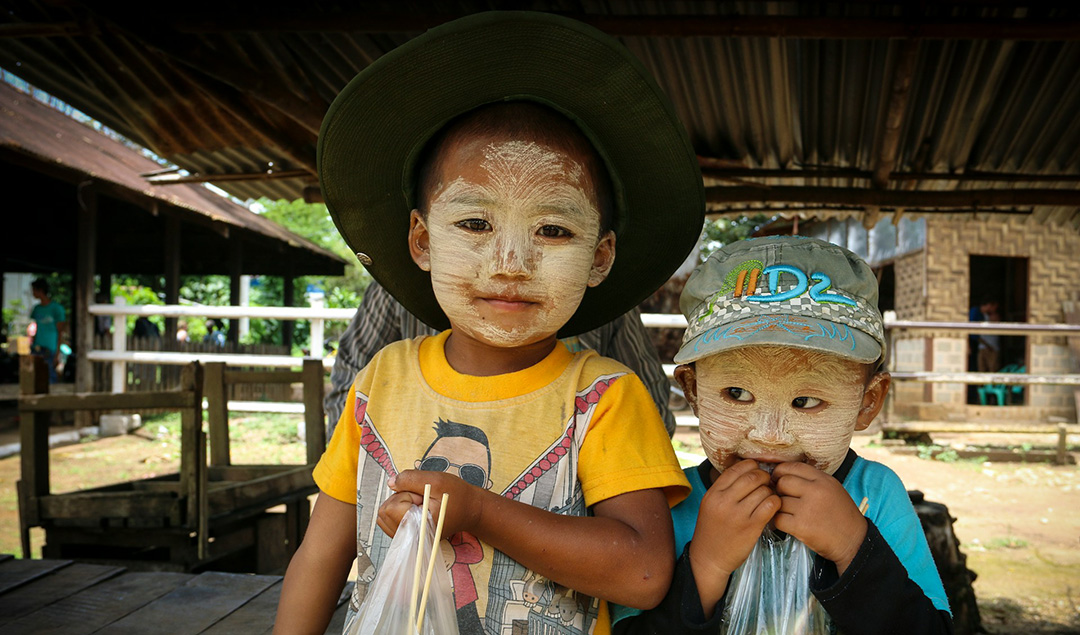
You will quickly notice many women and children with a yellowish-white paste applied to their faces, often in beautiful, swirling, leaf-like patterns. This is thanaka, a traditional cosmetic that has been used for over 2,000 years.
It is made by grinding the bark, wood, or roots of a thanaka tree with a small amount of water on a stone slab. It serves as a natural sunblock, has cooling properties, and is believed to tighten the skin. More than its practical uses, it is a cherished cultural symbol.
Don’t be shy to ask about it; locals are often happy to explain and may even offer to apply some on you. It’s a wonderful, authentic experience.
>> Read More: 18 Essential Facts About Myanmar That Every Traveler Should Know
Your Feet’s Best Friend: The Slip-On Shoe
You will be taking your shoes off constantly in Myanmar. You must enter all religious sites barefoot. You will also be expected to remove your shoes before entering someone’s home. For this reason, your choice of footwear is surprisingly important. Forget complicated hiking boots with intricate laces. The best shoes for Myanmar are comfortable sandals, flip-flops, or loafers—anything that can be easily slipped on and off. Your feet (and your patience) will thank you after the tenth pagoda visit of the day.
Getting Around: From Rickshaws to Riverboats
Myanmar is a large country, and travelling between its iconic destinations is part of the adventure.
The Overnight Bus Experience: A Rite of Passage
For budget-conscious travelers, the overnight VIP buses are a fantastic option. They are a cost-effective and time-efficient way to travel between major hubs like Yangon-Bagan or Bagan-Inle Lake, saving you on a night’s accommodation. These buses often depart in the evening, around 20:00 or 21:00, and are surprisingly comfortable, with reclining seats and onboard service. The journey includes a stop around midnight at a large, brightly-lit roadside complex, which is a fascinating cultural experience in itself.
The Catch: The air conditioning is often cranked up to arctic levels. An essential Myanmar travel tipis to dress in layers and bring a warm jacket, socks, and even a travel blanket to avoid freezing through the night.
When to Fly: Saving Your Precious Time
If your time is limited, don’t hesitate to book domestic flights. Journeys that take 10-12 hours by bus can be covered in just over an hour by plane. This is especially true for routes like Bagan to Heho (the airport for Inle Lake) or Yangon to Bagan. Airlines like Myanmar National Airlines and Air KBZ operate these routes. While more expensive than the bus, the time you save can be invaluable for a shorter trip.
City Transport: Embracing Modern and Traditional
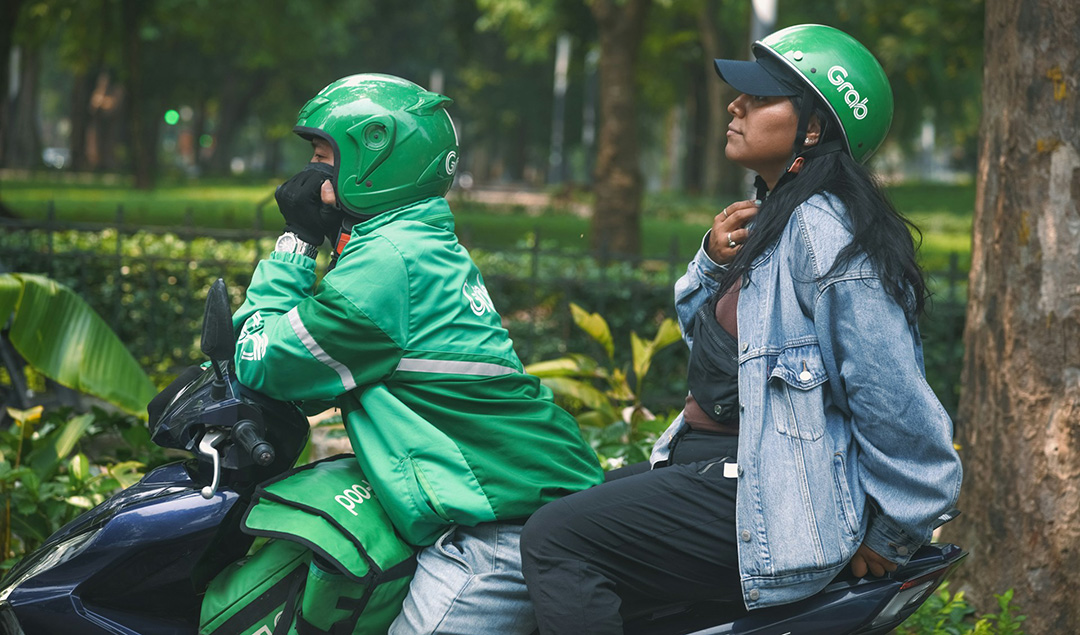
In the major cities of Yangon and Mandalay, the ride-hailing app Grab is your best friend. It’s reliable, convenient, and eliminates any need for haggling over fares. For shorter distances or in smaller towns, hopping on the back of a motorbike taxi or hiring a trishaw (a bicycle with a sidecar) is a fun and authentically local way to explore.
Staying Healthy & Connected
A few simple precautions can ensure you stay healthy on the road and manage your expectations when it comes to staying connected.
Water, Ice, and Street Food: A Cautious Approach
- Water: Never drink tap water. Only consume bottled and sealed water, which is readily available and cheap everywhere. Use bottled water for brushing your teeth as well.
- Ice: Be cautious with ice. In reputable hotels and restaurants, it’s generally made with filtered water, but in smaller local establishments or street stalls, it could be made from tap water. When in doubt, order your drinks without ice (“teh-yay ma-la” means no ice).
- Street Food: Don’t be afraid of street food—it’s delicious and a huge part of the culture! The key is to be smart. Choose stalls that are busy with a high turnover of local customers. This indicates the food is fresh. Opt for dishes that are cooked to order right in front of you.
Mosquitoes and Vaccinations
Health should be a top priority. Before you travel, consult your doctor or a travel clinic about recommended vaccinations for Myanmar, which may include Hepatitis A, Typhoid, and Tetanus.
Additionally, mosquito-borne illnesses like dengue fever are present. There is no vaccine for dengue, so prevention is key. Use a strong insect repellent containing DEET, especially during the dawn and dusk hours when mosquitoes are most active. Wearing long, loose-fitting clothing can also provide a physical barrier.
Wi-Fi and SIM Cards: Manage Your Expectations
Think of Wi-Fi in Myanmar as a pleasant surprise rather than a guarantee. It’s often slow and unreliable, even in good hotels. The single best thing you can do to stay connected is to purchase a local SIM card immediately upon arrival at the airport.
You will need your passport for registration. Providers like MPT, ATOM, or Ooredoo offer tourist packages with generous data allowances for as little as $5 USD. The process is quick and easy, and the staff will set it up for you. Having mobile data will be a lifesaver for using Google Maps, Grab, and looking up information on the go.
>> See tour: Myanmar Adventure Tour
Myanmar Tourist Visa: Essential Updates for Travelers
Myanmar has resumed issuing e-visas for tourists, with several key updates that every traveler should know before planning their journey. The e-visa is valid for 28 days, starting from the date of entry, and allows only a single entry into the country. It’s crucial to apply for the visa according to your intended travel date, not your application or approval date.
Currently, only certain airports and the Thai border crossing at Kawthaung accept e-visas, so travelers must check entry points carefully before booking their tickets. Notably, visa-on-arrival is generally unavailable, except for Hong Kong passport holders, who can receive it at airports until March 2026.
While ATMs are widely accessible in Myanmar, it’s advised to carry some cash as a backup. For the best exchange rates, ensure any USD bills are clean and undamaged. Safety and security should be top priorities; always consult the latest travel advisories issued by your government, as conditions in Myanmar can change rapidly.
Dual nationals should also note that Myanmar does not recognize dual citizenship. Burmese nationals traveling under another passport may face challenges such as conscription or movement restrictions.
Including these updated visa policies and practical tips will help travelers stay compliant and safe while exploring Myanmar’s vibrant culture and natural beauty.
Final Thoughts
Myanmar is a destination that rewards the prepared traveler, and with these essential tips covering everything from the etiquette of entering a pagoda to the use of local currency, you’re now equipped for an incredible adventure. It’s a land of profound beauty and spiritual depth that promises a journey unlike any other.
For those seeking to transform this knowledge into a seamlessly executed and deeply authentic experience, let the experts at Asia Travel Pioneer craft your bespoke itinerary. Pack your bags with confidence and an open heart; the magic of the Golden Land awaits, ready to offer you the travel story of a lifetime.
